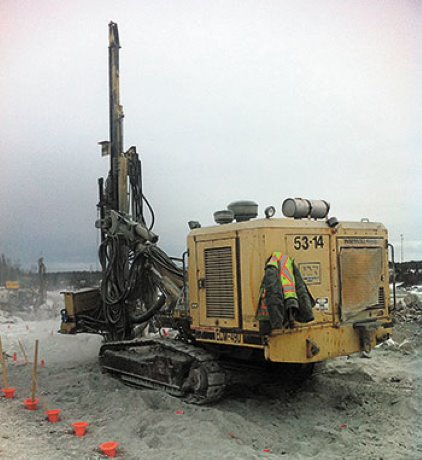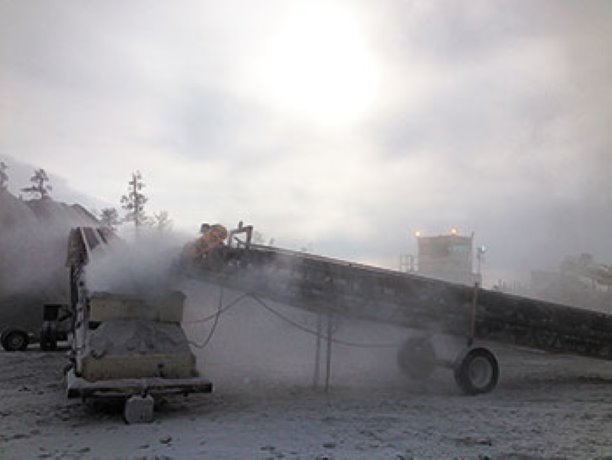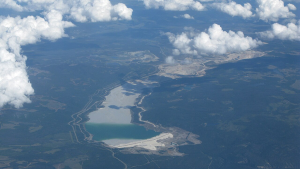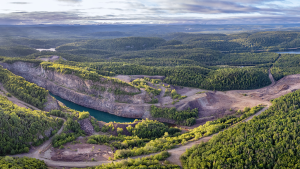Construction is progressing on the all-season road being built along the east side of Manitoba’s Lake Winnipeg.
To date, about $85 million in tenders have been awarded and many projects are complete, or in process, on the aptly named Eastside Road.
The road is 156 kilometres long and will follow the eastern shore of Lake Winnipeg, from Provincial Road 304 in the south to the Berens River First Nation Community in the north.
It will eventually connect northern communities to Manitoba’s existing network of all-season roads.
Currently, these communities must rely on winter roads, waterways and air travel to access goods and services from the rest of the province.
The Eastside Road Authority (ESRA), a provincial Crown Corporation, is responsible for the construction and maintenance of the road.
Construction officially began on the road in 2011 after extensive environmental consultations and initial design work by SNC-Lavalin Environment & Water.
The completed work consists of one detour structure, 24 kilometres of new road, three permanent bridges and a backwater channel.
Hugh Munro Construction Ltd. has completed most of the existing road construction under two contracts, for a total of 22 kilometres, valued at about $25 million.
Brent Good is a project safety coordinator for Hugh Munro Construction Ltd.
He worked on the Eastside Road project and said that after the brush was cleared by a different company, their work started.
“Once that was removed we started building the road,” he said.
“A lot of it was drilling and blasting, filling in the low swampy areas and prepping the road to the specification.”
That specification is outlined in the environmental impact assessment for the project.
It calls for a road with a gravel surface centered within a 100 metre right-of-way (ROW).
The assessment stated that the cleared limit for the roadway will be 60 metres with additional clearing as required to maintain sight distances. The roadway will be constructed with two 3.7 metre lanes, 1.0 metre shoulders and a 0.3 metre shoulder rounding allowance.
This results in a total roadway top width of 10.0 metres which allows for future roadway surface upgrading without major embankment work.
In areas of rock excavation an 11.0 metre clearance will be provided on each side from overbreak (rockfalls) following blasting.
Once the specified grade was reached, Good said the surface was made from material sourced locally.
“The final product of the road either came from the roadway or a designated quarry site,” he said.
“We would drill and blast and then crush the material to make the actual road product.”
The ESRA’s project management agreement stipulates that 30 per cent of the workforce hours for road construction contracts and 20 per cent of work force hours for bridge construction contracts be provided by local residents.
To ensure local residents have the training and skills required to do these jobs, the ESRA is offering three courses: introduction to construction; heavy equipment operator; and skilled labourer.
By December of 2013, 129 training opportunities had been provided for the residents and 170 local residents had worked on Eastside Road projects.
Three new construction companies have emerged from these opportunities: Hollow Water East Side Road Construction Ltd., BFN Construction Inc. and Pigeon River Contractors Ltd.
These companies have performed $41 million worth of pre-construction work including brush clearing, gravel crushing, aggregate production, access road construction and revegetation.
With about 132 kilometres of road remaining, there will be many more opportunities for these companies to benefit from all phases of this long-term project.
The entire initiative is expected to take about 30 years to complete at a total cost of about $3 billion.
A number of different companies have been involved with building the all-season road network to date.
H. Baudry Construction (1980) Ltd. has completed an additional 6.6 kilometres of roadway valued at roughly $5.5 million and is currently working on 2.6 kilometres valued at about $4 million.
Western Specialty Contracting has completed two kilometres of new road at a cost of approximately $6.4 million and a new company to emerge from this project, Bloodvein First Nation Construction Ltd. has built 6.8 kilometres of new road valued at $2.8 million dollars.
Surespan Construction Ltd. has completed three bridges across the Wanipigow River, Loon Creek and Longbody Creek with the contract values at about $4.8 million, $4.5 million and $13 million respectively.
A fourth bridge is currently under construction by Cyr Construction 1999 Ltd.
This bridge, located at kilometre 77 is valued at about $7.9 million.
The pre-load for a fifth bridge over the Bradbury River is being built by Hugh Munro Construction Ltd. for $1.7 million.
An additional bridge project is planned for the Pigeon River at kilometre 140.6 along the route.
For a lot more Roadbuilding and Heavy Equipment stories, check out the feature in the June 2 issue of the Journal of Commerce.












Recent Comments
comments for this post are closed